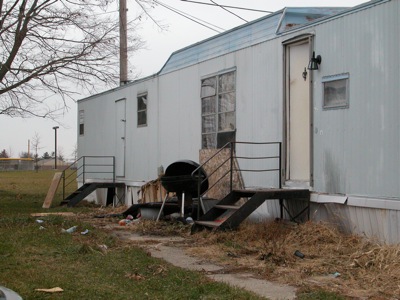Thursday, December 4th, 2008
St. Marys teen accused of planting bomb held on $1 million bond
By Shelley Grieshop
A teenager accused of planting a bomb at a gas station near a St. Marys city school on Tuesday is being held in jail on a $1 million bond.
Jesse B. McDermitt, 18, who was arrested at his home at Townview Terrace Apartments shortly after police discovered the homemade bomb, appeared in Auglaize County Juvenile Court on Wednesday morning. Judge Mark Spees ordered a court-appointed attorney to represent McDermitt after he declared himself indigent.
McDermitt has not yet been charged for Tuesday's incident, which ended without injuries or property damage. However, he remains incarcerated in the Auglaize County Jail because his alleged actions Tuesday violate terms of probation for a 2006 conviction for bringing weapons and explosives to school in Wapakoneta, according to county Prosecutor Ed Pierce.
"There was a motion (filed) to revoke his juvenile probation and juvenile parole," Pierce said of the court case.
McDermitt recently was released from juvenile detention for the Wapakoneta school incident in 2006, according to information from the earlier case.
Pierce said the investigation into Tuesday's incident is ongoing. When the report is complete, the prosecutor's office will review it and present it to a grand jury to decide if criminal charges are warranted, according to law procedures. If McDermitt is charged, he will be prosecuted as an adult in Auglaize County Common Pleas Court.
McDermitt, who turned 18 in October and is not a student at Memorial High School in St. Marys, reportedly left a bookbag beside one of the gasoline pumps at the South Street Marathon station shortly before 8 a.m. Tuesday. The bag was moved to the business entranceway by an employee who reportedly assumed a student had left it behind and would return.
About 45 minutes later, the bag was opened and wires and fluid-filled liter bottles were found inside. St. Marys police were immediately called; the Lima Allen County Regional Bomb Squad also was summoned and later safely detonated the bomb.
The high school and junior high school - located less than a block away - were placed on temporary lockdown.
Officers found McDermitt following a search of his apartment where they also discovered numerous items of evidence, they said. The teen was wearing a second homemade bomb, which reportedly fell from his shirt. That bomb also was dismantled and safely detonated by the bomb squad.
Authorities have not said why McDermitt allegedly set the bomb at the gas station or what his target may have been.
At the time of McDermitt's 2006 juvenile conviction, he told officials he had been harassed by other students who led him to bring homemade explosive devices, shotgun shells, a gas mask and knives into Wapakoneta High School, where he was a student at the time.
For the earlier crime - which included 10 criminal charges - McDermitt was sentenced to 21/2 years in juvenile detention.
Potential of the bombs:
The two homemade bombs found in St. Marys on Tuesday and detonated by a bomb squad had potential to burn but not explode, according to the State Fire Marshal's office.
But even without an explosion, the makeshift bomb left at a Marathon gas station could have been "potentially dangerous" had it burned near the gas pump where it was left, according to fire marshal spokesman Shane Cartmill.
The second bomb was found on 18-year-old Jesse McDermitt, who reportedly admitted to leaving the first bomb in a backpack at the South Street gas station before 8 a.m. Monday. He remains in jail.
Cartmill said the fire marshal's forensic laboratory is currently analyzing what's left of the bomb material and liquids from the devices that were safely detonated by the Lima bomb squad on Tuesday.
"The device was not a bomb in the traditional sense," Cartmill said about the mass of wires and bottles of liquid found in the backpack.
Cartmill called the bombs "incendiary devices" comprised of multiple components, however, further information on their contents won't be available for at least two weeks, he added.
"The lab will analyze the structure of the device to see how the materials would have interacted," he said. "We just don't know exactly what kind of damage they could have done until they are reassembled."
- Shelley Grieshop

